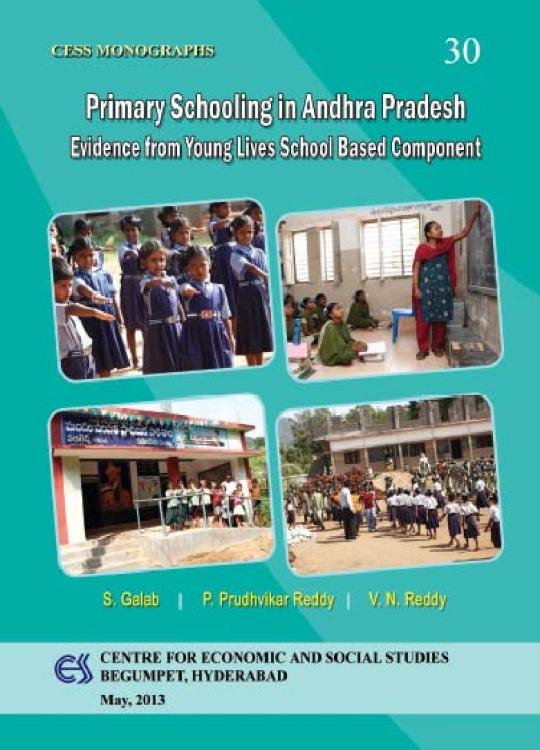
Breadcrumb
Primary Schooling in Andhra Pradesh: Evidence from Young Lives School-based Component
This paper presents preliminary findings from the school survey carried out in 227 schools in Andhra Pradesh during the school year 2010–11 as part of the Young Lives study. It looks at the factors that contribute to better functioning and performance of primary schools. This is in the context of rising enrolment among 6 to 14 year-olds in India in the wake of the Right to Education Act, and the steady increase in the number of private schools across the whole of India since 2006. It is based on interviews with children and their teachers, along with observations of schools and classroom practice, and the scores attained by the children in Grade 5 tests. District Education Officers were also interviewed.
Profile of schools, teachers and headteachers Teachers working in government schools are better qualified and more of them have a teaching qualification than teachers in private schools. Teachers’ expressed high levels of satisfaction in all schools. In government schools, their biggest complaint was about non-teaching activities and lack of parental involvement; in private schools teachers were concerned about the lack of parent’s involvement. Many headteachers are women, considerably more in urban areas. English is taught in private schools from Grade 1, and most private schools offer English-medium tuition. English starts from Grade 3 in government schools. School infrastructure and environment Most government schools are small, with less than 5 classrooms, and open spaces are frequently used for teaching. Government schools are better placed than private schools when it comes to availability of textbooks, maintaining a library, and having innovation programmes (for children to be involved through activities such as a suggestions box, children’s committee, message boards, etc.). Private schools spend comparatively large amounts on infrastructure and have better staff facilities, internet, and better sanitation, cleanliness, and drinking water. Community involvement in both government and private schools is negligible. Grade 5 test results Children in private schools did better in tests on Maths, Telugu, Environmental Studies and English. Children in aided private schools did better than those in unaided school. Most private schools attained grade A or B in government assessments; the percentage was slightly lower for government schools. The number of computers per school, annual expenditure on infrastructure, and positive recognition (awards to students) all have a positive effect on children’s Grade 5 exam results. Further factors included the head-teacher’s qualification and job satisfaction. Education Officer perspectives Education Officers observe that the majority of parents want to send their children – both boys and girls – to school, regardless of community, income level, or caste. However, children from tribal communities or families that migrate, still face some problems in access to education. Teacher absenteeism is high in tribal areas, compounded by inadequate support for teachers and vacant posts. This can be addressed with regular monitoring by the education officer. Children could be supported with better transport to school. Relieving teachers of non-academic work would help them to better fulfil their primary duties. Parents are attracted to private schools because they use English as the medium of instruction and have better infrastructure. They also feel that their children will receive more individual attention, more hours of tuition, regular homework, regular reports, and more extra-curricular activities. Publicising the positive achievements of children in government schools helps to improve performance.

